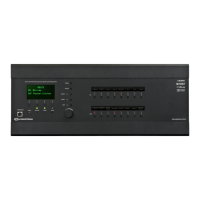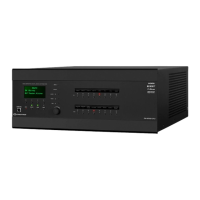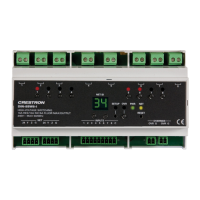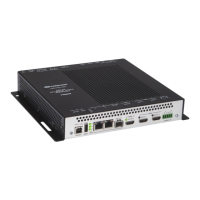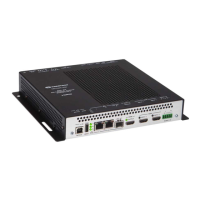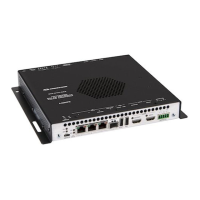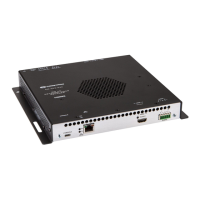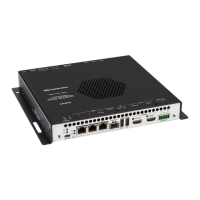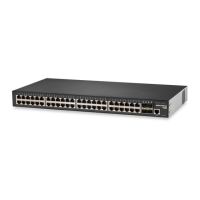36 • DM NVX System Design Guide – DOC. 7977F
Internet Group Management Protocol (IGMP): A network protocol that allows multicast
traffic to pass over adjacent routers on an IPv4 network; defined in IETF RFC 2236 for v2,
and IETF RFC 3376 and IETF RFC 4604 for v3
Internet Protocol (IP): A communications protocol that relays information across
network boundaries between addresses; defined in IETF RFC 791 for IP version 4
Infrared (IR): A method of providing device control using light waves just beyond the
range of red light
International Standardization Organization (ISO): A nongovernmental organization
that publishes standards on all topics for international use, including audio and video
compression standards; works jointly with the IEC to develop certain standards such as
JPEG 2000
JPEG: An acronym for Joint Picture Experts Group
JPEG 2000: The image compression technology using wavelet-based scaling techniques
to reduce image size without block noise and at high quality; defined in ISO/IEC 15444
Media Access Control (MAC): A 48-bit address in the Ethernet protocol that establishes
the unique physical device in a network that is routed to or from that physical device
Main Distribution Frame (MDF): The signal distribution frame for networking that
connects premises physical plant equipment to outside physical plant equipment
Moving Picture Experts Group (MPEG): A working group of the ISO and IEC that sets
standards for audio and video compression and related technologies
Microsoft Challenge-Handshake Authentication Protocol (MS-CHAP): A network
authentication protocol that is used for network devices by RADIUS servers. MS-CHAP is
defined in IETF RFC 2433 for MS-CHAP v1 and IETF RFC 2759 for MS-CHAP v2.
Multicast: One-to-many data transfer that allows scalable distribution of audio and
video in an efficient manner
Multi-Protocol Label Switching (MPLS): A labeling protocol for network traffic such
that short labels rather than long network headers are used to route traffic
appropriately; defined in IETF RFC 3031
Network Topology: The layout of a network as it would appear visually in a simplified
form
Protocol Independent Multicast–Sparse Mode (PIM-SM): A protocol for routing
multicast traffic such that the routes are optimized and effectively prevent flooding of
uplinks in network infrastructure; defined in IETF RFC 7761
Plenum: Part of a building where heating, ventilation, and air conditioning are provided
Public Key Infrastructure (PKI): A set of procedures and policies for the different roles
required in securely managing digital certificates and the infrastructure used to
exchange both asymmetric encryption keys and symmetric encryption keys
Quality of Service (QoS): A performance improvement feature that prioritizes more
important network traffic over less important traffic in a network switch
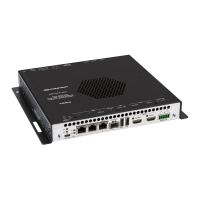
